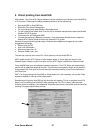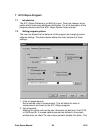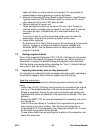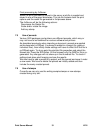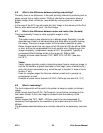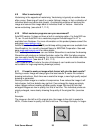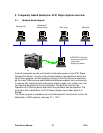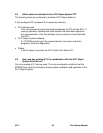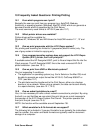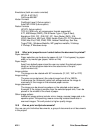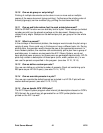
A741 34 Print Server Manual
8.6 What is the difference between printing and plotting?
Currently there is no difference. In the past 'printing' referred to producing text on
paper using a line or matrix printer. 'Plotting' referred to a procedure where a
graphic image (lines, circles etc.) was drawn by moving a pen on a sheet of
paper.
In the case of the A741 we will create the 'plot' image in the memory of the Print
Server, after which we will 'print' the final image.
8.7 What is the difference between raster and vector files (formats)
There are basically 2 ways to store a graphic image in a file:
Raster
The raster image is also referred to as a bitmap image. Basically it can be
described as a matrix of individual black and white dots (or pixels) forming
the image. There are a large number of file formats to describe a raster.
Raster images tend to be very large (a full A0 sheet at 400 dpi will be 32Mb
in size), but can be compressed to a much smaller size. Depending on the
image complexity, compression ranges of 40:1 are possible. Typically a
compressed 36x48 bitmap will be in the range of 1.5Mb to 5Mb.
Example of some raster formats: TIFF, BMP, PCX, HP-RTL (see also
8.8,10.7)
Vector
Vector images typically contain instructions about how to create an image. In
fact the file contains a global description of the 'page' (size, orientation etc.)
and a list of pen movements (e.g. move the pen to location X, draw a line to
location Y etc.)
Even for complex pages the files are relatively small and in general no
compression is used.
Example of some vector formats: HP-GL/2, CalComp (see also 8.9, 10.7)
8.8 What is rasterising?
The final image which will be sent to the printer is always a raster (or bitmap)
image.
Vector format data (like HP-GL, CalComp etc.) must first be converted to this
final raster format. In fact, the image is created inside the memory of the
computer.
Raster images (like TIFF, .BMP, .JPG etc) need to be de-compressed (if
necessary) and adjusted to the resolution of the output device (for the A741
400dpi).
The processes described above are normally referred to as rasterising. (see also
8.7)




